Travelling by train from Toronto to Vancouver is a spectacular journey, one that winds through some of Canada’s greatest towns, cities, and vistas. Between central Ontario and the west coast, the Canadian landscape transforms from lakes to prairies to the picturesque Rocky Mountains. But that’s not the only difference you’ll find while crossing this country by rail. Each province offers something new and intriguing — a unique portal into the playful and welcoming delight that is Canadian culture. So, whether you’re most looking forward to seeing and experiencing the east, the west, or the in-between, this cross-country route is sure to surprise you!

Toronto
Toronto sits at the forefront of Canadian culture, and its illustrious Union Station is the perfect starting point for your jaunt around the city. Once you’re out exploring the streets, you’ll quickly learn that the city’s art, fashion, and food scenes are constantly evolving, which ensures a top-notch trip. During your time here, it’s hard to miss popular spots such as the Royal Ontario Museum, Kensington Market, or the Hockey Hall of Fame, but there’s so much more to see, including the CN Tower, High Park, and the Art Gallery of Ontario. Plus, no matter the time of year, there’s bound to be a buzz around the city. This could be a result of Toronto’s many celebrations, such as the Royal Agricultural Winter Fair, Pride, Caribana, or the Toronto International Film Festival, or it could be attributed to the fans from one of the many major sports teams in the city. No matter what you stumble across during your time in Toronto, the city promises to introduce you to an unforgettable Canadian experience!
Once you board the train at Union Station, you’ll take off and pass various displays of the city’s modern architecture, street art, and greenhouse initiatives. And, if you leave Toronto on a clear night, you’ll be able to watch the sky open up as you venture away from the beaten path — stargazing in the Skyline car, anyone?
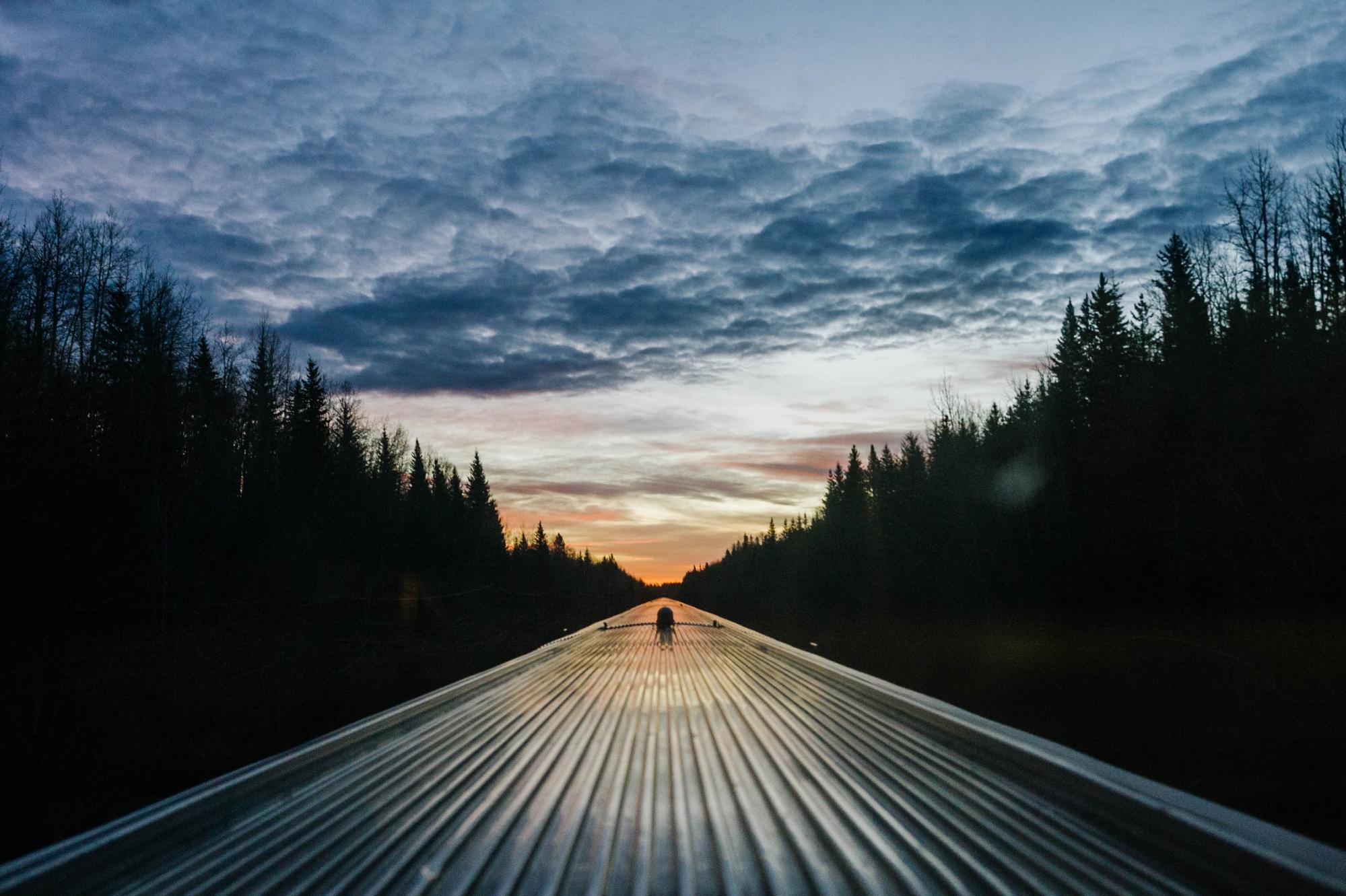
Sudbury Junction
Just north of Toronto, you’ll find Sudbury Junction in Greater Sudbury, a small city forged through the mining and forestry. Today, roughly 160,000 people live in the single-tier municipality, and its land area makes it the largest city in Northern Ontario and the fifth-largest in all of Canada. Sudbury is also home to 330 lakes, its most prominent being Lake Wanapitei — the largest lake in the world completely contained within the boundaries of a single city. Though it does have an urban area as well, this locale is best known for its small, rocky mountains; the exposed igneous rock of the Canadian Shield; and the Sudbury Basin, a major geological structure created by a crater some two billion years ago.
From the train, you’ll pass by lake after lake after lake, along with fishing camps and cabins perched on tiny islands. We recommend spending this time in the domed Skyline car, or inside your own cabin, and fixing your eyes to the iconic scenery.
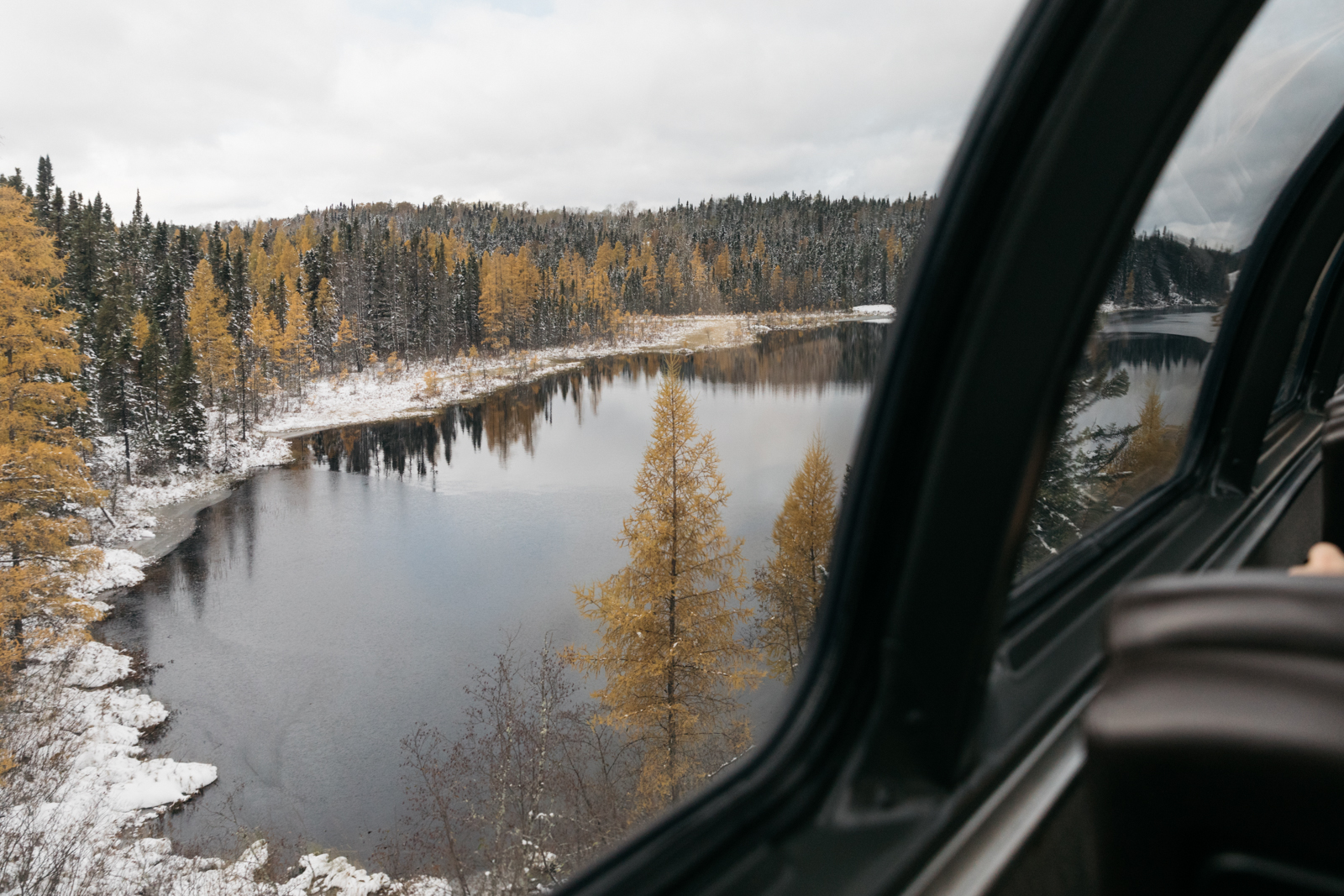
Sioux Lookout
As you wind through a stretch of towns with names like McKee’s Camp, Gogama, Foleyet, and Mud River, you’ll pass more birch trees than you can count, as well as beaver dams and fallen trees that indicate the beloved Canadian creatures have been at work. From there, you’ll meet the heart of northwestern Ontario’s lake country. Situated at this point in the journey is Sioux Lookout, which derives its name from the stories of the First Nations Ojibway people who once climbed to the top of Sioux Mountain to watch for oncoming canoes that belonged to enemy warriors. If you have time, you can learn more about the town’s history by visiting the Sioux Lookout Museum, which is conveniently located on the second floor of the train station.
The town we know today, though, was incorporated in the early 1900s and used primarily as a railway town. But with endless rivers and lakes nearby, it didn’t take long for tourism to become a large part of the local economy — which you’ll soon understand as you experience the surrounding wilderness. Since then, Sioux Lookout has been dubbed the “Hub of the North” and has grown in popularity as an unrivaled destination for paddling, fishing, and hunting. Though you won’t have time for any of those activities during your train travels, you’ll have ample opportunity to ogle at the landscape that makes the area famous.
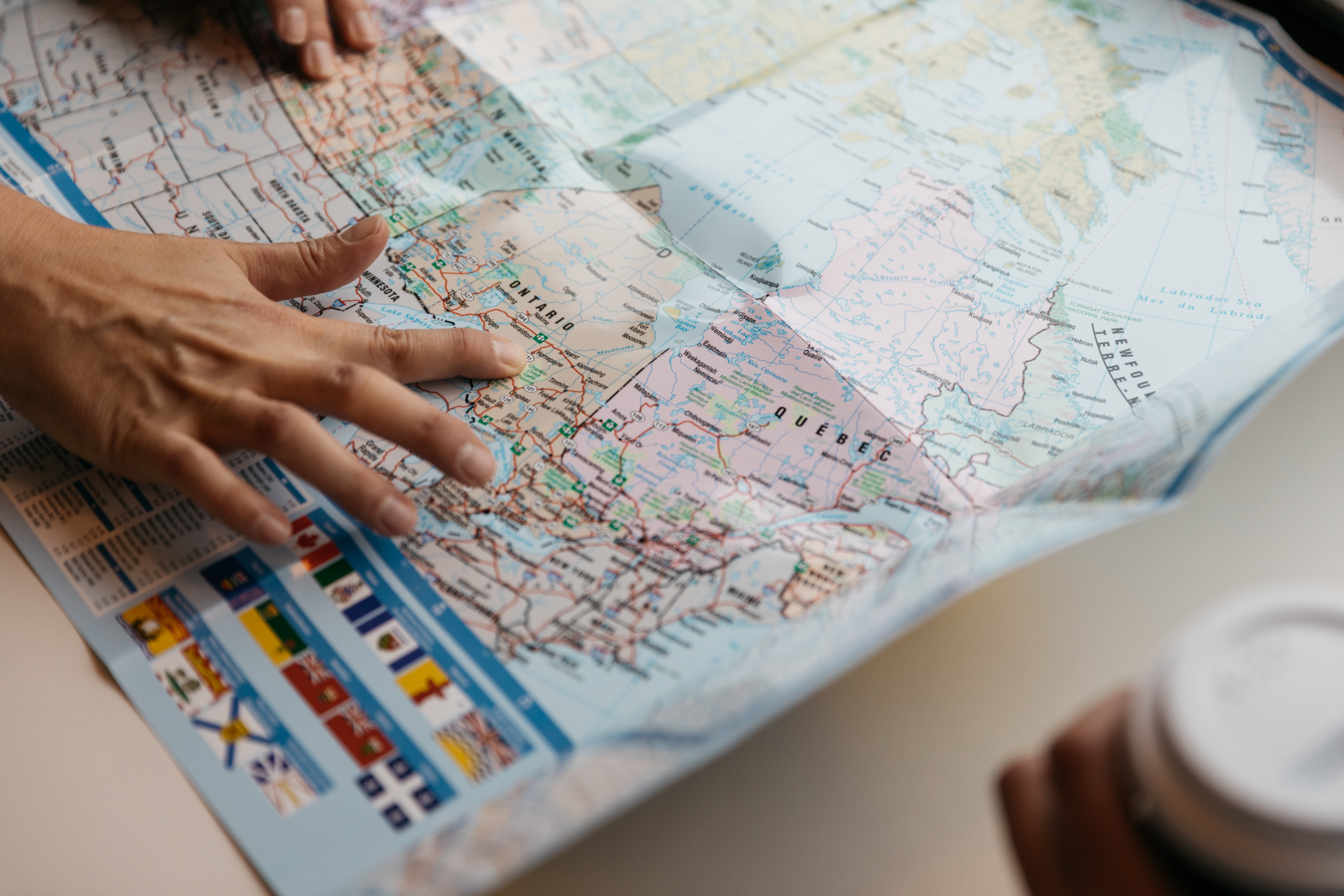
Winnipeg
Shortly after you leave Sioux Lookout, the lakes and forests of Ontario will abruptly end and you’ll be met by the gorgeous Canadian Prairies of Manitoba, one of the country’s three “prairie provinces.” With roughly half of Manitoba’s population residing within its city limits, Winnipeg is not only the province’s capital, but also its cultural and economic center. As The Canadian approaches the city, you’ll pass by homes with gazebos and above-ground pools, alongside backyards and side roads, and through areas packed with real life.
At Winnipeg’s Union Station, the train crew switches out, and often, the change results in a longer stop. If you experience this stop during the day, we recommend venturing to the middle of the city’s action: “the Forks”, where the Red and Assiniboine rivers meet, as well as most of the locals. This recently repurposed land is used for everything from shopping and walking trails to markets and parks. In 1973, it was commemorated as a National Historic Site of Canada to celebrate 6,000 years of human convergence in the area. If you have the time, other Winnipeg attractions include the Canadian Museum for Human Rights, the Winnipeg Art Gallery, the Exchange District, and, of course, @kalbarteski’s murals promoting wildlife conservation (which can be found via #backalleyarctic)!
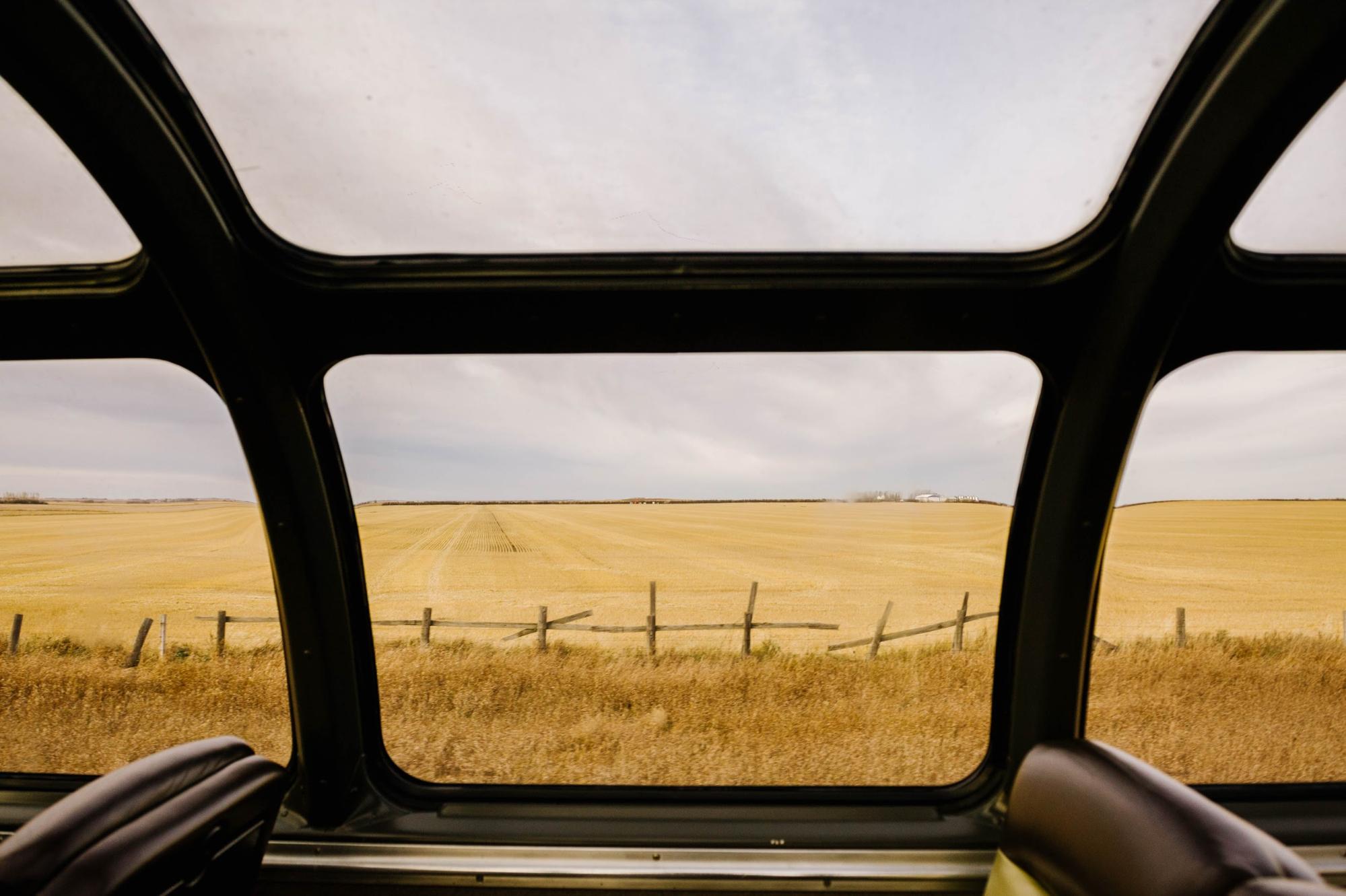
Saskatoon
With new faces to acquaint yourself with and freshly stretched legs, you’ll be set to sit back and enjoy the beautiful, vast stretches of amber and green laid out under a (hopefully) blue sky. In fact, though many book this journey because of the front-row views of the Rockies, it is common to disembark in Vancouver recounting the beauty found in Canada’s prairies.
As you enter central Saskatchewan, you’ll find that Saskatoon is smack dab in the middle of this prairie paradise. Straddling the South Saskatchewan River, Saskatoon is filled with historic neighborhoods, indigenous culture, and native wildlife. The city also lies on a long belt of rich potassic chernozem and is located in the aspen parkland biome. The lack of surrounding mountainous topography gives Saskatoon a relatively flat grid, though the city does sprawl over a few hills and into a handful of valleys, allowing you to gaze out as far as the eye can see and soak up every last bit of beauty along the rail line.
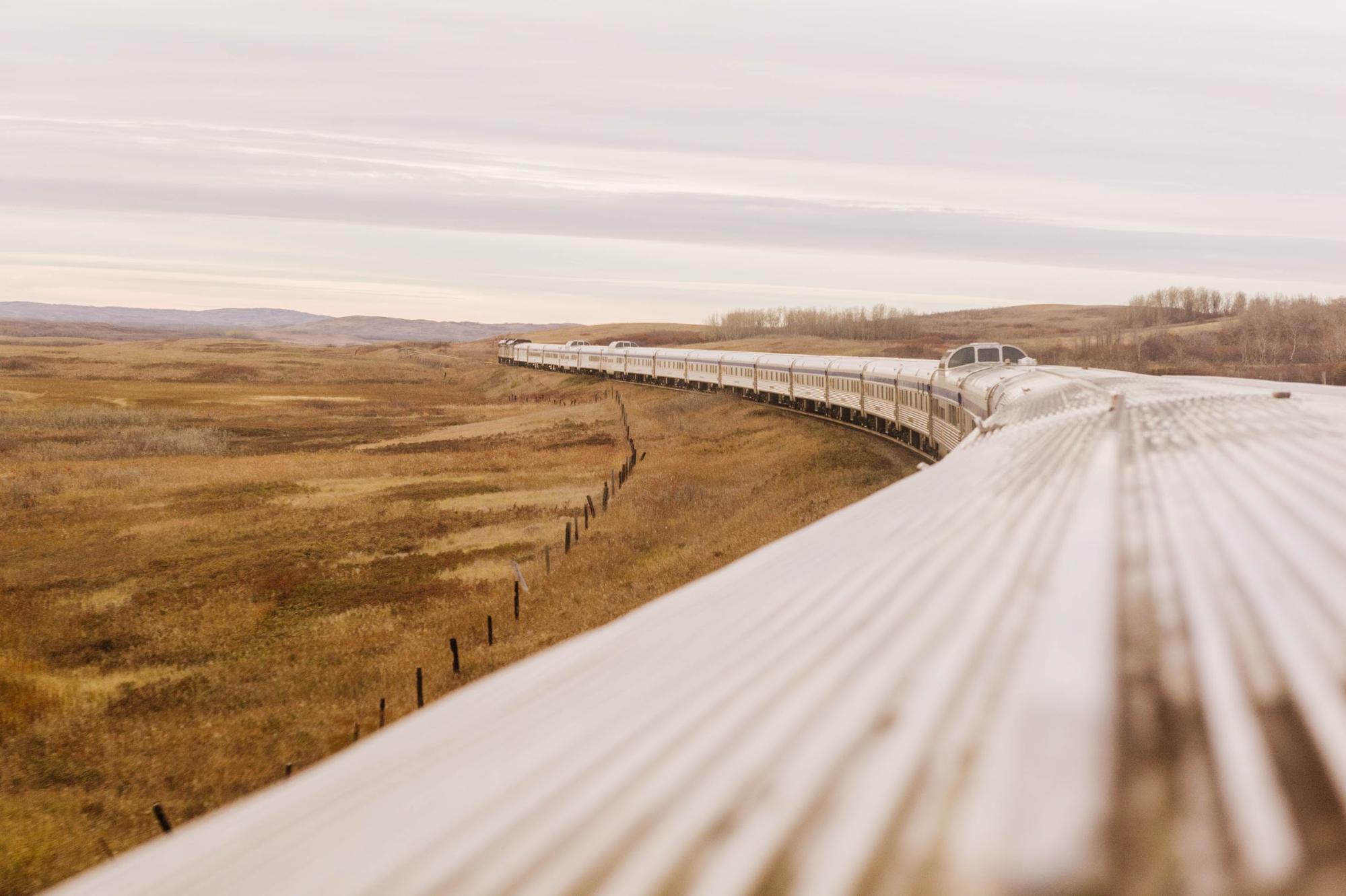
Biggar
While in Saskatchewan, you might also want to take some time to appreciate Biggar — a quietly charming town of 2,000 — if only for its slogan: “New York is big, but this is Biggar.” Though Biggar is definitely smaller than NYC, there is something charming about its cozy size. As more and more people move to cities and larger urban centers, small towns are often overlooked on travel guides. But places like Biggar remind us that communities thrive at different paces, and small towns are every bit as part of Canada as any major city. The beauty of seeing this country by rail is that you get to experience all that it has to offer. So, while passing through, take in the quaintness of Biggar and try to spot its famous sign, displaying its slogan — at the end of the day, you’ll probably be the only one of your friends who can say they’ve been to Biggar, Saskatchewan.

Edmonton
Next on the list is Edmonton, a city on the rise, highlighted by an abundance of innovative artists, makers, farmers, and chefs. But unless you choose to stop off in Edmonton, you’ll simply have to appreciate the striking architecture, beautiful wilderness, and eclectic, colorful neighborhoods that Alberta’s capital is known for. Edmonton is a young, growing, and, for the most part, an untapped travel destination — but that’ll be changing soon. The city boasts a long list of attractions, but for train travelers, the city is known for its location on the North Saskatchewan River, its northern position (it is the most northerly city in North America, situated at the same latitude as Hamburg, Dublin, Manchester, and Magnitogorsk!), and its ravines and deep river valleys. The terrain in and around Edmonton is striking, as aspen parkland surrounds the city and acts as a transitional area from the prairies to the south and boreal forest in the north. And, as you leave Edmonton’s train station, you’ll start to catch your first glimpses of snow capped peaks in the distance.
Jasper
The next stop this train makes is one you won’t soon forget. Jasper National Park is nestled in the Canadian Rockies and offers a unique opportunity for those traveling by rail, as it affords that rare chance to cut yourself off from the buzz of life on a train and reconnect with nature among good company. While the area is an undeniably popular winter destination for skiers and snowboarders, you can indulge in a few (more casual) activities, as the train stops at a station inside the park!
Explore the postcard-perfect town by perusing its local shops, stopping in for coffee and a snack at a nearby bakery, strolling its charming streets, catching a quick drink at Jasper Brewing Company, or snapping a few photos of the town and train against the mountainous backdrop. Everything is within easy walking distance of the station. No matter what you decide to do, Jasper will serve as a lovely break from the train while also teasing you to get back on and take in the crown jewel of the journey — the Canadian Rockies.

Mount Robson, Pyramid Creek Falls, & Kamloops
Settle into the domed Skyline car and you’ll see the scenery shift from lakes and streams to forests of pine and spruce, and, finally, mountains. The views are stunning, and your car will quickly fill with oohs, aahs, and camera shutters. From there, you’ll pass Mount Robson — the most prominent mountain in North America’s Rocky Mountain range and the highest point in the Canadian Rockies — before entering British Columbia and seeing Pyramid Creek Falls and following the northern shore of Moose Lake. Moose Lake is the only lake along the course of the Fraser River, boasting breathtaking views of the area.
British Columbia will meet you with even more natural scenery, and Kamloops is no exception. The Columbia Mountains protrude throughout BC’s interior, creating a diverse terrain used by mountain bikers, hikers, golfers, and those with a penchant for freshwater fishing. Though north of the Okanagan Valley, Kamloops has a similar, desert-like climate, with hot and dry summers and mild winters, which make it a prime location for award-winning wine and farming. From your position on the train, however, you’ll be greeted by the area’s four nature parks.

Vancouver
And before you know it, you’ll be at your destination! With its beaches, breweries, museums, and music scene, Vancouver is truly the Queen of Canada’s west coast. Arriving at the Pacific Ocean is a Canadian experience unlike any other, as the infrastructure is new, the communities are multicultural, and the collaborative energy is palpable. Founded just 130 years ago, Vancouver is still very much a young city, with a mindset focused on a sustainable and green future. During your visit, you’ll notice yoga studios on almost every block, as well as sensory deprivation float tanks, health food shops, and a general spirit of well-being. Vancouver also makes the most out of its geographical location with hot spots like Stanley Park, Granville Island, and English Bay being easily accessible from the city proper. But no trip to Vancouver is complete without at least peeking at the Vancouver Art Gallery or the Museum of Anthropology, which host a significant amount of First Nations art.
Once your time in Vancouver is complete and you’re headed home, the Canadian landscape won’t soon leave your memory. If anything, its beauty will sharpen with time spent in other places.
What are some of your favorite places in Canada to explore? Let us know in the comments below!


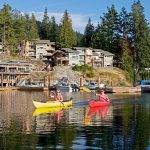

I must agree that these places are noteworthy. Each has its own beauty that no traveler should miss.
Great article and some god tips. Can’t wait for my trip now later this year.
I love the Museum of Anthropology in Vancouver. So glad it was mentioned. Winnipeg is great ! Under the radar type of city. While there if you get a chance visit Oak Hammock Marsh. It is the home of Ducks Unlimited and just a beautiful place to walk around and see wildlife.